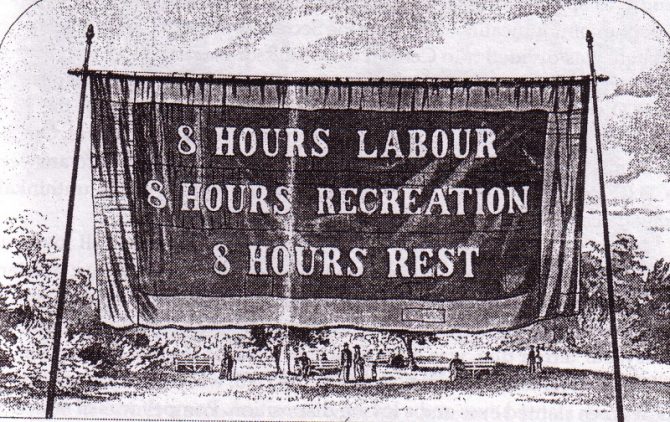The 22nd of October is Labour Day. Not only is this a public holiday - which is great - but it also serves as a great opportunity to remember workers' history in addition to the rights that have been fought for, and won, throughout labour history in New Zealand.
To start at the start, Labour Day commemorates the successful fight for an eight hour working day. The right to the first eight hour work day was won by a carpenter in Wellington by the name of Samuel Parnell in 1840. This right was later enshrined into law with the Labour Day Act in 1899. This made Aotearoa-New Zealand one of the first countries in the world to introduce the eight hour work day. This was a great achievement and one that should not be taken for granted.
What Labour Day, and the history surrounding Labour Day, should serve to remind us is that the eight hour work day (40 hour work week) was not always the norm and that it was the result of a struggle. However this is not where this story ends: in 2008 the Department of Labour in New Zealand released figures that showed roughly 415,000 New Zealand workers were working in excess of 40 hours per week. This highlights the fact that there is, contrary to popular myth and perception, no longer any legislative rights to an eight hour working day in New Zealand.
For the reasons stated above, it is important to remember the history of days like Labour Day. Remembering the history is important in remembering the past and how far we have come as a country, but more importantly, to remember that there were struggles for these rights and to ensure that we don’t have to have to struggle for them again.
Other important events in worker’s history include:
- The Formation of the Maritime Council in 1889 that formed in Dunedin with representatives from the wharf labourers’ and West Coast miners’ Unions.
- The Maritime Strike of 1890.
- The 1908 Blackball Miners’ Strike that won a 30 minute lunch break for the miners. This event would also lead to the rise of the New Zealand Federation of Labour.
- The Maoriland Worker was launched in Christchurch in 1910 by the Shearers Union. It was a Monthly Journal that became influential during the Anti-war movement in the lead up to and during the first First World War.
- The Waihi Miners’ Strike of 1912 was one of the most fierce industrial disputes in New Zealand’s history. 1,000 miners went on strike, bringing Waihi Gold Mine to a Standstill. Striking Miner Fred Evans was killed by a crowd of strikebreakers and the Police during the strike.
- The Birth of the Labour Party in 1916 that was founded by representatives of the Social Democratic Party, the United Federation of Labour, and the Labour Representation Committees.
-
The 1924 Rail Strike.
- The 1951 Waterfront Lockout and Supporting Strikes that lasted 151 days and involved 22,000 workers at the height of the dispute. This dispute arose when employers refused to agree to the 15% wage increase granted by the Arbitration Court.
- The 1979 General Strike. The first general stoppage in the history of New Zealand's industrial relations.
Resources on Labour Day and Labour History in New Zealand:
- The Christchurch City Libraries page on Labour Day
- The Labour History Project
- The New Zealand History page on Workers' Rights
- Bert Roth and Janny Hammond's book Toil and Trouble provides an easy to use Index of New Zealand's Labour History.
There are also many great books on New Zealand's labour history that can be found in the library:




Add a comment to: Labour Day: A reason to remember